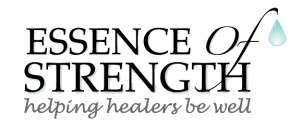A common misconception about me is that I am a vegetarian. The funny thing is I am quite a carnivore. I do well when I travel internationally because I don’t really discriminate against any type of meat. I have always said if it is seasoned up right I’ll try almost anything.
The confusion for most people comes from the fact I really like vegetables also. So many people have seen me consuming grilled brussel sprouts and quinoa veggie salad they think I have beef with beef.
I will admit I made a decision a few years ago to limit my intake of animal fats in order to decrease my risk for coronary heart disease, stroke, diabetes, obesity and certain types of cancer. Since I like a challenge, I started this endeavor by spending a month being a vegetarian. It just so happened it was Vegetarian Awareness Month at the time so that may be where the confusion began.
For me, it really was not that difficult to use black beans, eggs and quinoa as my main sources of protein. My daily diet did not have to change that much. I learned how to prepare tasty, satisfying vegetarian and even vegan meals.
At the end of my trial run as a vegetarian I determined I still wanted to eat hamburgers and Buffalo wings, but I could live without them. Although I have allowed meat back into my meals, I still try to center my diet around foods grown from the earth.
Many of us could benefit from cutting back meat in our diets to decrease consumption of saturated fats. This does not have to be a radical event where you throw out all the bacon in your house.
Thankfully, if you are not already suffering from hypertension, diabetes or the like drastic measures are not yet necessary.
Also, you likely will be more successful with a change your diet if you make it gradually and of your own volition. That tends to feel more autonomous than because someone else told you to do it so you don’t die.
With that in mind, you may want to try these ways to bump up the fruits, vegetables and grains in your diet.
Start having one meat-free day per week. You can test out vegetarian dishes and see what you find tasty and filling. If you are starving without meat you may need to add more protein to the mix. Black beans and quinoa are my go-to sources of meat-free protein.
For the sake of full disclosure, let me confess I am not a tofu fan. As an omnivore, when I want a burger I don’t want soy. However, some people like the idea of meat substitutes that behave kind of like real meat such as tofu, tempeh, and seitan.
Figure out what works for you. If nothing else, you’ll learn you can enjoy a meal without meat.
Eat actual vegetables on the days you don’t eat meat. My friend uses the term “pasta-tarian” for people who don’t eat meat, but never actually consume vegetables.
One of the benefits of decreasing meat consumption is it allows more space in your diet for vegetables. This is negated when your meatless day is spent eating grilled cheese sandwiches and spaghetti.
Every once in awhile it is good to ingest something that came off a stalk. There are so many systems in your body that will thank you.
Don’t deep fry the nutrition out of your vegetables. Living in the South for eight years taught me anything can be battered and fried.
In all honesty, many of those items are delicious. However, for maximum health benefits, you actually want to taste the food you are eating.
I once heard a dietitian say you want to avoid food that is shiny. If there is so much batter, sauce or oil on your vegetables as to make the taste unrecognizable, you may have cooked the healthy right out of it.
Try cold water fish as your meat. Salmon, tuna, mackerel, sardines and herring are great sources of omega-three fatty acids. Omega-3s are the “healthy” fats that help prevent heart disease and high blood pressure.
Regardless of what some pescatarians would have you believe, this is still eating meat. However, the effects on cholesterol are quite the opposite of that of a ribeye steak.
Of course, nothing is a panacea so you have to make sure you consume these fish in moderation due to potential mercury exposure.
Limit the size of your meat portions. When you do incorporate terrestrial meats into your meals, make sure the size is no larger than the palm of your hand.
Fred Flintstone should not be our patron saint of portion size. Most American food portions are too large.
By decreasing your meat portions, you’ll have more coveted plate space for those healthy whole grains and vegetables.
Those who know me well know I am a stickler for semantics. Maybe that is why, even though most of my meals are plant-based, I refuse to call myself some version of a vegetarian.
I am simply an omnivore who chooses vegetables more often than meat. For the sake of your health, you may want to do the same.
If you would like help developing strategies to support your own wellness, please click here to request an Essence of Strength sample coaching conversation.
Dr Jattu Senesie is a board-certified obstetrician-gynecologist, certified success coach, physician satisfaction specialist and speaker. She blogs about issues of self care and well-being in an effort to help her fellow altruistic high achievers find satisfaction in their success as early in their careers as possible.




